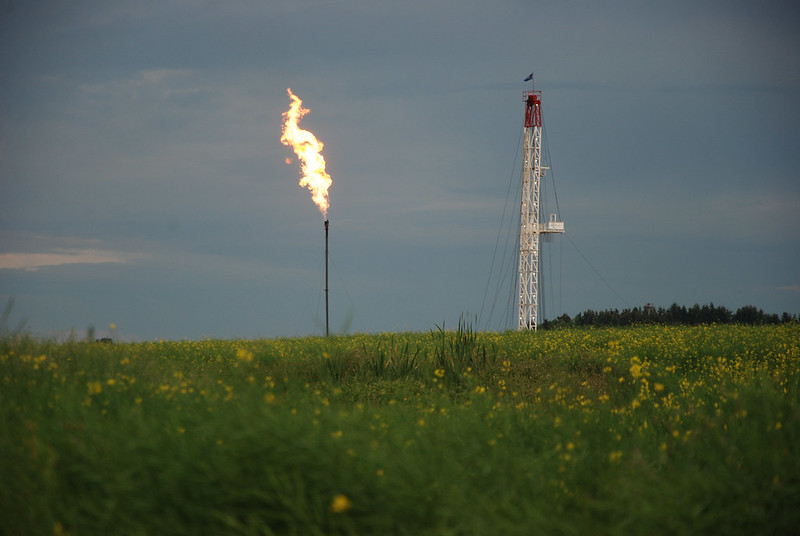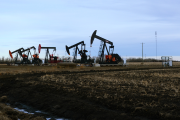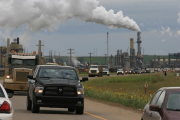Global momentum on addressing methane emissions is building, and not a moment too soon.
Already this summer, we have had to turn our attention to the tragic reality of catastrophic weather events, with record temperatures scorching Europe in July and the wildfires that devastated the community of Lytton, B.C., for the second year in a row. It’s often said that nothing happens quickly in climate policy, but addressing methane emissions is one of the quickest, simplest and most affordable ways to make a big difference to our climate’s trajectory. With more than 100 countries (including Canada) signing on to the Global Methane Pledge at last fall’s COP26 summit – and milestone methane reports from the International Energy Agency, the United Nations Environment Programme and the Intergovernmental Panel on Climate Change – it is clear that we are now on the precipice of global action.
It is timely, then, that the federal government in Canada is in the process of developing new regulations on methane for the country’s oil and gas sector. The Pembina Institute, as part of a coalition of leading North American climate and energy organizations, has submitted recommendations, including two pivotal proposals: that the government implement new rules fast (starting in 2025) and that it commit to the near-elimination of methane emissions by 2030.
Yes we can
In these types of policy processes, government ambition-setting is important: it defines the parameters of what is considered achievable and lets industry know which way the wind is blowing, so companies can plan accordingly. But in this instance, if the federal government actively sets out to completely stop emitting methane, it would in fact be aligning itself with a pledge already made by the Oil and Gas Climate Initiative (a global consortium of companies – including from Canada – that represent 30% of global oil and gas production). This commitment demonstrates that companies themselves think methane emissions can be eliminated. The government would be wise to take them at their word and regulate that promise, especially with a federal cap on oil and gas sector emissions looming.
As the primary component of natural gas, and therefore one of the products of oil and gas production, methane tends to be emitted either through leaky equipment (something we call “fugitive emissions”) or when companies decide to designate it a waste product and release it on purpose (“venting”) or burn it (“flaring”). But just as you would not let a leaky bathroom pipe go on leaking until your living room ceiling caved in, oil and gas producers should not let methane escape from their facilities and into the atmosphere, where – with almost 100 times the warming impact of carbon dioxide – it makes an outsized contribution to climate change.
It’s a no-brainer
Some of the things we will need to do to decarbonize Canada’s oil and gas production – the largest source of our annual emissions – require big up-front investments and take time to build (carbon capture and storage, for instance). Solving the methane problem will be incredibly cheap and straightforward by comparison. It mostly involves common-sense preventative measures, such as more regular and rigorous leak-detection and repair regimes at oil and gas facilities or the elimination of routine venting and flaring. Instead, producers can be asked to capture the methane they are emitting and sell it, or use it on-site to avoid wasting a valuable product. This also means the cost of capturing methane is always offset against the potential revenue when that methane is sold – so when natural gas prices are high (as they are now), methane abatement becomes even more affordable for producers. For example, our analysis of a 2019 study from the Canadian Energy Research Institute shows that, at current natural gas prices, oil and gas methane emissions can be reduced by 88% for only $12 per tonne of carbon dioxide equivalent (compared to the current carbon price of $50 per tonne).
Implementing a strong regulatory framework would also allow Canada to maintain its place as a global leader on methane. Otherwise, we risk falling behind standards being set elsewhere, such as in New Mexico (where all routine venting and flaring is already prohibited) and by the U.S. Environmental Protection Agency. The recipe for success includes close collaboration between our federal and provincial governments, as well as with the United States. In fact, Prime Minister Justin Trudeau and President Joe Biden have already highlighted methane as an important area of collaboration in a wide-reaching agreement called the 2021 Roadmap for a Renewed U.S.-Canada Partnership.
This would spur the kind of innovation that tends to be great news for Canadian industry. According to the Methane Emission Leadership Alliance, a grouping of Canada’s leading methane-reduction practitioners, there are more than 170 Canadian companies providing methane-emissions management solutions right now – 80% of which say they expect jobs to grow as a result of methane regulations.
In this sense, we should all be excited about methane, given that it presents us with a win-win-win for the government, industry and Canadians. On our path to net-zero by 2050, this is a rare opportunity that we should grasp with both hands.






